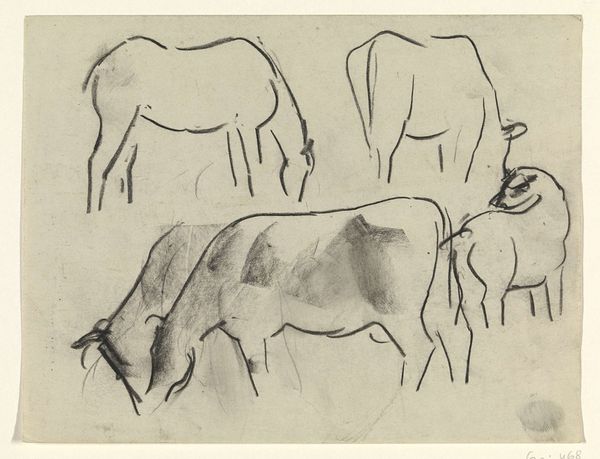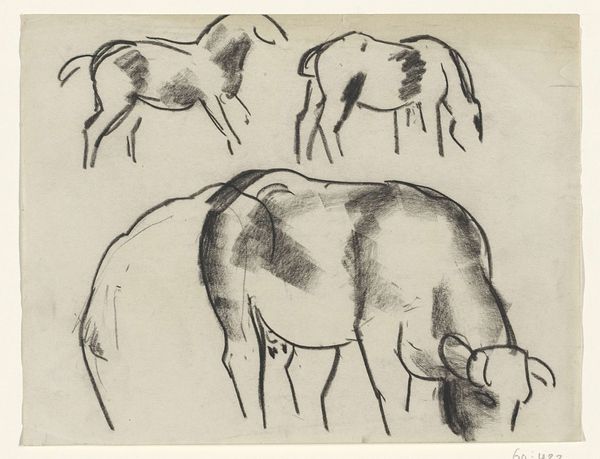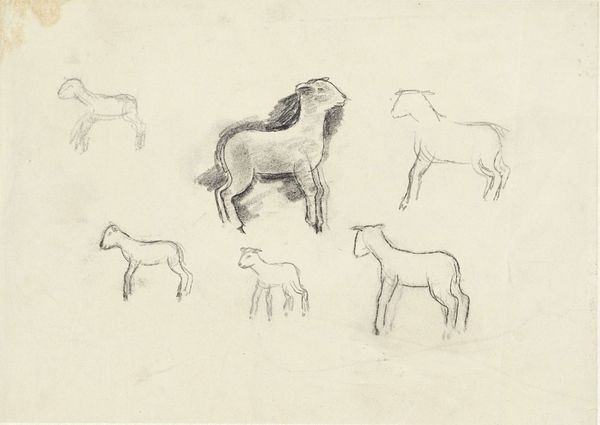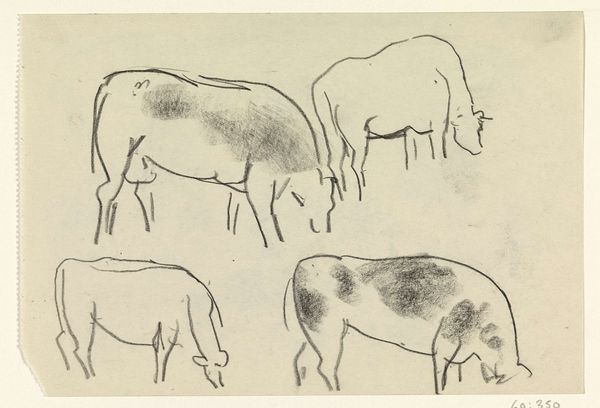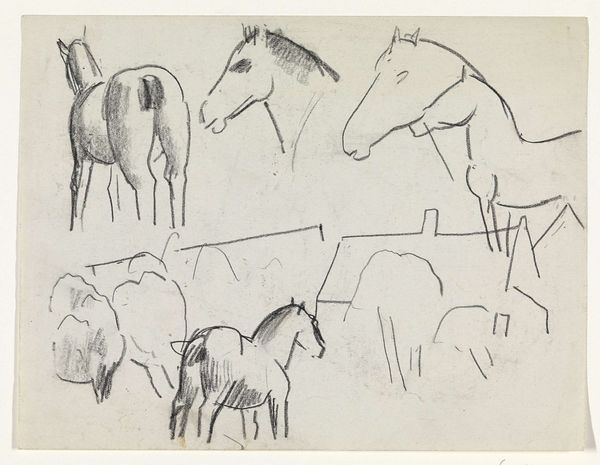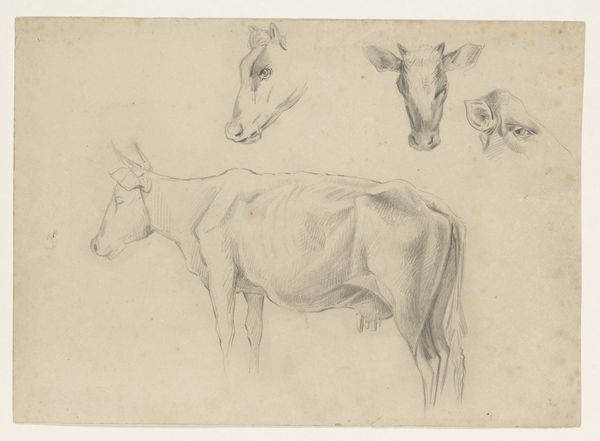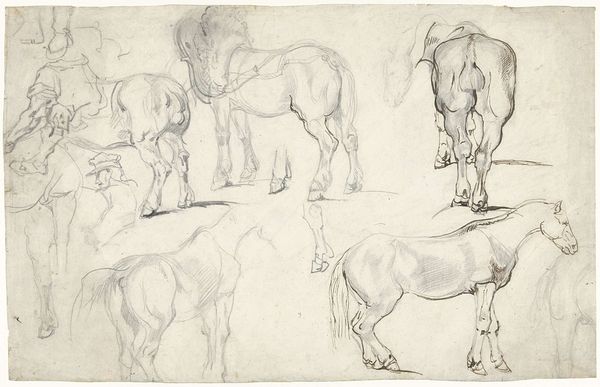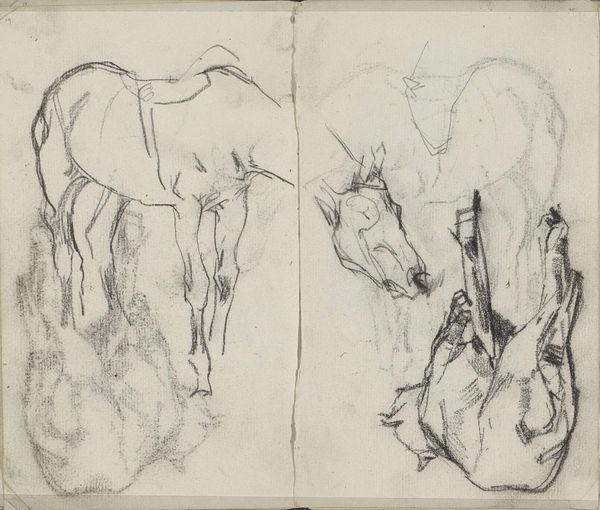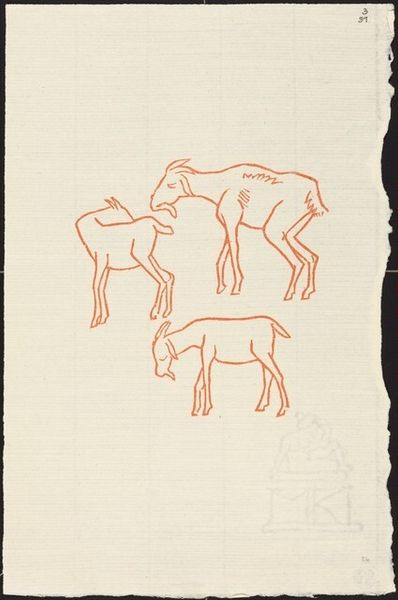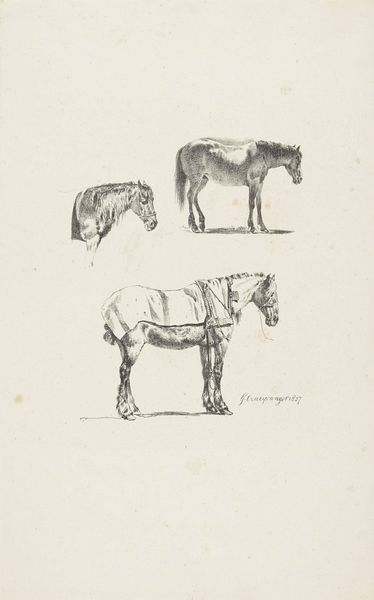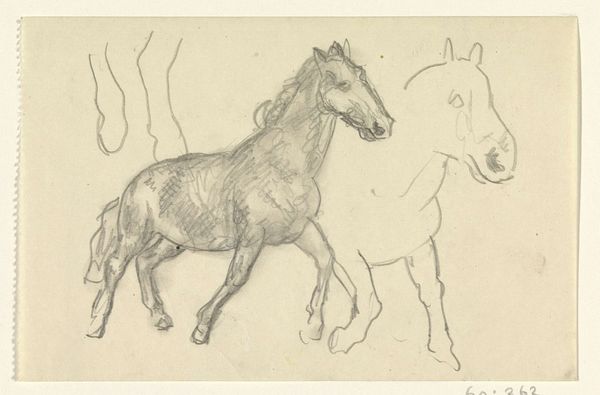
drawing, graphite
#
drawing
#
landscape
#
figuration
#
horse
#
graphite
Dimensions: height 275 mm, width 400 mm
Copyright: Rijks Museum: Open Domain
Editor: Here we have "Horses from different sides" by Leo Gestel, created sometime between 1891 and 1941. It’s a graphite drawing currently held at the Rijksmuseum. There’s something really raw about it, the way the horses are sketched feels very immediate. What do you see in this piece, from an art perspective? Curator: From a formalist standpoint, the drawing showcases a compelling study in form and line. The varying depictions of the horses, rendered with graphite, allow us to deconstruct Gestel’s engagement with representing three-dimensional figures on a two-dimensional plane. Consider the lines – are they contour lines defining the edge, or do they imply volume through hatching and cross-hatching? Editor: I see both, especially in the way the shading around the central horse's body gives it more weight, whereas the smaller one feels flatter. Is there a reason why he might have chosen this fragmented approach rather than a more traditionally realistic style? Curator: The choice to forego strict realism invites a closer inspection of the aesthetic choices made. Notice the economy of line – how few strokes are used to convey the essence of the animal. This is not simply a representation of horses; it is an exploration of visual language. Ask yourself: how do these stylistic choices affect our understanding of the subject? What sort of language does Gestel communicate? Editor: So, it's less about depicting 'horse-ness' and more about understanding the artistic language being spoken through shapes and lines? It’s kind of like learning the grammar, not just reading the story. Curator: Precisely. By attending to the formal elements, we gain insight into the artist's intent and the artwork’s communicative power, irrespective of historical context. Editor: That's really interesting! I never considered just stripping away all the historical or social factors and focusing just on what's in front of me. It's a completely different way to see the piece. Curator: Indeed. It reframes how we find value in art by appreciating the conscious artistic language.
Comments
No comments
Be the first to comment and join the conversation on the ultimate creative platform.
